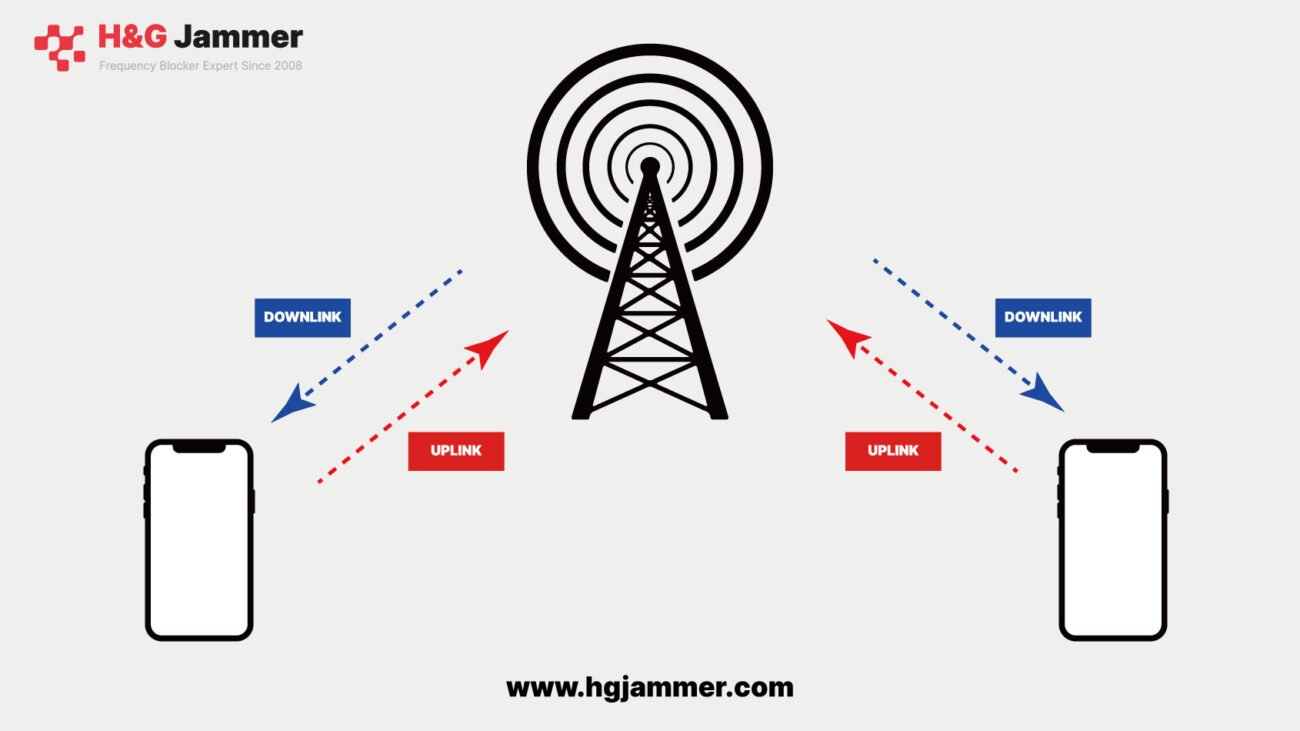What Are Downlink and Uplink Jamming

Everyone knows phone jammers block cell signals, but what many don’t realize is that there are two distinct methods to do this: downlink interference and uplink interference. While both can effectively jam signals, there’s a significant difference between them.
Why we always say downlink jamming is the safer option?
If you’re not familiar with signal jammers, this might be a bit confusing. That’s why we’re breaking down the differences between downlink and uplink jamming to help you understand why we prefer downlink technology.
What are Downlink and Uplink?
When it comes to mobile signal transmission, there are two-way communications between your phone and the cell tower. The signal sent from your phone to the tower is called the uplink, while the signal sent from the tower to your phone is called the downlink.
To block communication between the phone and the tower, you only need to interfere with one of these pathways, not both. Interfering with the signal from the phone to the tower is known as uplink interference. Conversely, blocking the signal from the tower to the phone is called downlink interference.
By targeting just one of these links, you can effectively disrupt the phone’s ability to communicate without needing to jam both directions. This distinction is crucial in understanding how phone jammers work and why downlink interference is often the safer and preferred method.

This diagram will help you better understand uplink and downlink. In the diagram, the red line represents the uplink, and the blue line represents the downlink.
Differences Between Downlink and Uplink Jamming
Simply put, downlink interference targets individual phones, while uplink interference affects the entire communication tower. The difference in impact is significant.
As we introduced above, uplink jamming disrupts the signal from your phone to the tower, potentially affecting the entire network connected to that tower. Imagine the phone service for your entire neighborhood being disrupted. It’s not only highly disruptive but also easy for telecom providers to detect. Once they spot this interference, they will promptly start an investigation to trace its source.
On the other hand, downlink interference only disrupts the signal from the tower to your phone. This makes it much harder for telecom providers to notice, akin to someone unsuccessfully trying to send you a text without you knowing. Detecting downlink interference is notoriously difficult, which is why it’s a hot topic in the communications field. If you’re interested, there’s a classic research paper on this subject that’s worth a read.
Academic Approaches to Coping with Downlink Jamming
In fact, detecting the presence of downlink jamming has always been a challenge in the field of telecommunications, and extensive research has been conducted on this topic over the past decades. This paper presents a method using mathematical models to detect downlink jamming by analyzing measurement data of received power and signal quality from base stations. This is the most reliable scheme for detecting downlink interference so far; however, it has several limitations. For example, in urban or high-density areas, where there are numerous sources of signal interference, it becomes more difficult to distinguish between interference sources and normal signal fluctuations using this model. Furthermore, this method cannot detect low-power signal interference, and implementing this scheme requires costly upgrades and adjustments to the base stations. These limitations mean that such research remains in the experimental stage and has not yet been applied in the real world.
Final Thoughts
Now you should understand why downlink jamming is a safer option, at least for those using cell phone jammers. Technically, we could produce jammer targeting uplink transmission. However, we choose not to do this because it could lead to more severe consequences. In fact, we have received emails from customers requesting that we switch to an uplink jamming approach, but we declined them without a second thought.
